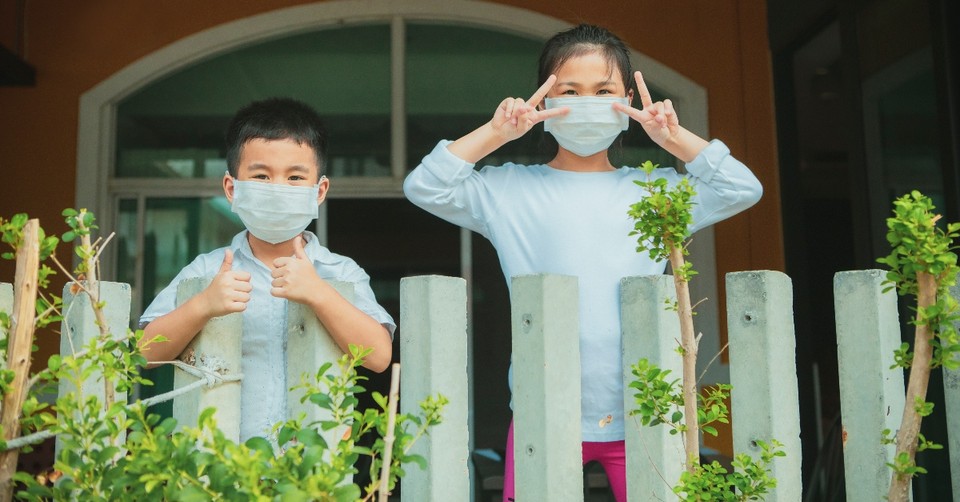9 Manageable Ways to Keep Your Family Healthy during Covid-19

These days, everyone is looking forward to life going back to normal—or some semblance of normal—once the Covid-19 pandemic is over. In some areas of the country, businesses and schools either remain closed or are operating on a hybrid schedule (i.e., toggling between in-person and from-home days). In other areas, locations are open but still subject to social distancing restrictions.
The pandemic and the flurry of restrictions caused by it have sparked fear far and wide over our loved ones’ physical, mental, and emotional health. With so much grief and uncertainty around us, it’s no wonder that national health organizations have reported spikes in anxiety and depression rates in adults and children alike.
Thankfully, the light at the end of the tunnel is becoming clearer. Presently, millions of people 16 years old and older are getting vaccinated against the coronavirus daily. In addition, pharmaceutical companies are currently studying the safety and effectiveness of the Covid-19 vaccines in children in the hopes of including minors in the nation’s vaccination efforts.
Despite the pace of the coronavirus vaccine roll-out, however, most people are still not vaccinated to date. Of similar concern is the appearance of Covid infection “hot spots” throughout the U.S., and new variants of the virus being identified worldwide.
Because of this, it’s vital that you keep taking protective measures to push back the virus as it threatens to take hold of every facet of your family’s health—physical, mental, emotional, and spiritual.
Here are 9 manageable ways to safeguard your family’s health during the pandemic.
1. Reinforce the Importance of Wearing a Mask, Even If You’ve Been Vaccinated
One important preventative measure that the Centers for Disease Control and Prevention (CDC) has encouraged since the start of the pandemic is to wear a mask.
Specifically, the CDC recommends that you wear a mask around people who don’t live with you, and at home when someone in your household is sick. Reinforce for your children that the purpose of a mask is to provide a barrier that helps prevent respiratory droplets from spreading, protecting both the person wearing the mask and the people around the mask wearer.
Even after you’ve been vaccinated, you should consider that no vaccine is 100% effective at preventing Covid, and that medical experts are still researching whether the current vaccines prevent transmission of the coronavirus from asymptomatic carriers. For these reasons, the CDC recommends that even those who have been fully vaccinated continue to wear a mask in public as well as when visiting unvaccinated people indoors if those people are at an increased risk of severe illness from Covid-19.
For CDC guidelines on the types of masks you should use and how to wear masks properly, click here.
2. Emphasize Proper Handwashing
The CDC also continues to recommend that everyone wash their hands with soap and water for at least 20 seconds. For younger kids, sing Happy Birthday or the ABC’s twice to make those 20 seconds fly by. Dry hands with an air dryer or a clean towel.
In areas where soap isn’t available, use a hand sanitizer containing at least 60% alcohol. Supervise children five and younger to prevent potential swallowing of the hand sanitizer, which can cause poisoning in children.
3. Be Mindful of Coughs and Sneezes
Another effective way to curb the virus’s transmission is to teach children to cover their mouth and nose with a tissue when they cough or sneeze, and then throw the tissue in the garbage. Children should also be taught to cough and sneeze into their elbows instead of their hands.
Equally important is to teach children to maintain a safe distance from others who are coughing and sneezing. Generally, children should be discouraged from touching their nose, eyes, and mouth with their hands especially when out in public.
4. Insist on Social Distancing
There’s no way around the fact that Covid-19 remains a highly contagious disease and that social distancing is still necessary to reduce its spread. The CDC has repeatedly urged that people who don’t live together maintain a distance of six feet away from each other. On March 19, 2021, the CDC shortened that distance to three feet apart for most students in grades K-12 only as long as those students are wearing masks while in school.
Notably, highlight for your children the importance of avoiding nonessential indoor areas and crowded outdoor areas where there’s reason to believe that social distancing will be unlikely. Last, discuss with your children the fact that, while wearing a mask is still necessary, it’s not a substitute for appropriate social distancing.
5. Wipe, Disinfect, and Repeat!
At this point, you’re probably a pro at wiping down and disinfecting surfaces in your home. However, even if you’ve been hunkering down at home for the entirety of the pandemic, you’ve still been handling “outside” items such as mail, packages, and groceries.
Although the likelihood of becoming infected with Covid-19 from these items is low, it’s not impossible. To that end, the CDC recommends that you wash your hands with soap and water for 20 seconds or use a hand sanitizer with at least 60% alcohol after handling these types of items.
You should also continue to wipe down and disinfect high-touch surfaces in your home, defined as surfaces in your home that people are constantly touching. Examples of high-touch surfaces are doorknobs, light switches, the microwave panel, mobile phones, remote controls, and knobs and levers in the kitchen and bathroom.
Frequent cleaning of these spaces becomes essential when someone in your house is sick and is likely to touch these home surfaces. The risk here involves a healthy person touching a contaminated surface and then bringing their hands to their face and getting infected. To better tolerate these recommended frequent cleanings, wear rubber gloves so the chemicals in the wipes don’t aggravate your skin.
6. Isolate Sick Household Members
If someone in your household gets sick, it’s challenging to know if that person has Covid-19 or something else. To prevent possibly spreading Covid-19, it’s vital that the sick person stay home and keep away from others in the home. The ill person should self-quarantine until it’s safe for them to be around others as outlined by the CDC here.
Further, while the sick person self-isolates and awaits test results, encourage everyone else in the household to wear a mask and avoid sharing household items with the isolated person such as cutlery, cups, and towels. It’s also a good practice to open windows to promote air circulation within your home.
7. Practice and Promote Healthy Habits to Combat Stress and Anxiety
As important as it is to prioritize physical health during the pandemic, it’s also key to prioritize your family’s emotional and mental well-being. To combat the stress and anxiety that many have experienced during the pandemic, encourage your household members to practice healthy habits that include eating well-balanced meals, exercising regularly, and getting adequate sleep.
Another way to heighten emotional and mental well-being is to find time to unwind by doing activities you each enjoy. Also, you and your family can reduce feelings of loneliness by getting involved with community or faith-based organizations. Many of these organizations offer ways to connect safely online, through social media, or in socially distanced ways.
8. Take Time to Care for Yourself for Your Sake and Your Children’s
As a parent, you want your children to have a hopeful outlook for the future. Also as a parent, you set the tone for the household and, frankly, you can’t reflect what you don’t possess. In that regard, to better foster hopefulness in your kids, you first have to take the steps necessary to nurture your own feelings of positivity.
To boost your sense of positivity, set aside time for yourself to do things that help you relax or that simply make you happy. This can include setting aside alone time for yourself, spending quality time with friends in a safe way, or rekindling the romance with your spouse or significant other.
9. Lean on God to Help Hope Float
The coronavirus has turned so much of our daily routine on its head—how we live, work, learn, and even how we worship.
With so many churches either not conducting service or conducting a much-altered version of service, your child may find comfort in being reminded that the Lord our God is unchangeable through it all—He is the same today as He was yesterday as He will be tomorrow (Malachi 3:6).
Also, depending on your child’s age, you may find yourself faced with the question that can go to the very heart of your faith life: Why does God let bad things happen to good people? While much ink can be spilled on answering this question, one digestible answer for children is that God promises to bring good out of even the worst situations for those who love Him, and God always keeps His promises (Romans 8:28; Psalm 145:13).
Further, if you’re a parent struggling to encourage a child who is grieving the death of a loved one, you may want to offer this assurance: those who follow Jesus and whose life on Earth has ended are restored through a new life in Heaven, where there is no more death or crying or pain (Revelation 21:4).
The coronavirus pandemic has induced an ongoing sense of stress, fear, and uncertainty that extends beyond adults and has affected children. To help your children cope with the impact of the pandemic, make it a routine to check in with them and with every other member of your household to see if anyone needs some extra TLC.
Practice the above tips to nurture your family’s overall health and, if necessary, don’t hesitate to seek additional help here.
Photo Credit: ©Getty Images/Suriya Silsaksom
Dolores Smyth is a nationally published faith and parenting writer. She draws inspiration for her writing from everyday life. Connect with her over Twitter @byDoloresSmyth.
Originally published March 29, 2021.







